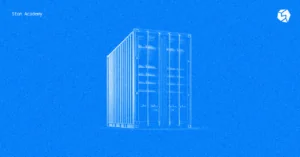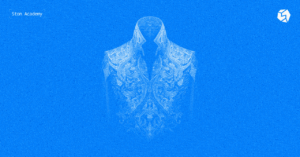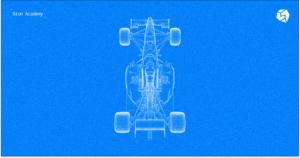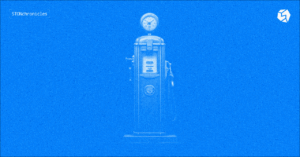
Imagine owning a fraction of a luxury apartment in Manhattan, a masterpiece by Picasso, or even a share of a gold reserve — all without ever setting foot in a real estate office, art gallery, or bank. What once seemed like a distant dream for the average investor is now a tangible reality, thanks to tokenization.
However, as promising as this innovation is, it also poses critical questions. How can tokenized assets maintain trust and security on decentralized platforms? Can the technology handle the scale required for global adoption? And will governments embrace this new financial frontier or resist it through regulation?
This article explores the transformative potential of tokenization, examining its benefits, challenges, and the technological advancements shaping its future. From fractional ownership in real estate to the tokenization of commodities, we’ll show how blockchain is reshaping the way we think about ownership, investment, and accessibility in the digital age.
What Is tokenization and why do we appreciate It?
The concept of tokenization is the idea of translating real-world assets into their digital representations for subsequent sale in the form of crypto tokens.
- Companies can tokenize anything from commodities like gold and silver to real estate, opening up opportunities for their sale on platforms in the on-chain environment.
- Tokenization is more accessible to non-institutional and retail investors with no access to traditional sales venues and offers considerable liquidity inflow options.
- Tokenization leverages all of the key benefits of the blockchain, including transparency, a peer-to-peer basis that involves no intermediaries, and lower overall costs.
- Tokenization is also a powerful instrument for attracting liquidity and empowering speculation, which ultimately raises the value of the tokenized asset on secondary markets.
What is fractional ownership?
Fractional ownership is a key term of tokenization signifying that a single whole real-world asset can be owned by multiple individuals who buy shares of it in tokenized format. This means that a business can sell anything from a work of art to a real estate property to multiple individuals at the same time.
The business does not ultimately care who or how many individuals or parties purchase an asset, the important thing is to sell it. Tokenization allows this by giving a large number of smaller investors to acquire shares of a larger property or asset that would otherwise have been inaccessible to them.
- Art. Use cases of fractionalized ownership of artwork are already available and have been proven to be successful. For example, Masterworks enables investors to purchase shares in famous artworks from renowned artists such as Picasso, Banksy, and Basquiat. The platform tokenizes these high-value assets, making fractional ownership available to retail investors who can buy portions of the artwork instead of the entire piece.
- Real estate. But the biggest market for tokenized asset ownership is the real estate market. Complete digitization and near-instant settlement are the main benefits to be had, since they will open up the market to a completely new audience of buyers who had only dreamt of owning a share of a luxury property before. For instance, Propy is a blockchain-based platform that allows multiple investors to purchase shares of a single property, making it easier for individuals to access high-value real estate.
- Publicly traded securities. For example, Ondo Finance has introduced a tokenization platform Ondo Global Markets. It enables investors outside the U.S. to gain on-chain exposure to thousands of U.S. publicly traded securities, including stocks, ETFs, and mutual funds. These tokens are accessible 24/7 and are designed to have the same liquidity as the underlying securities.
Critics and skeptics would state that the actual use of owning a tiny fraction of a luxury property is moot at best, but they are neglecting the main benefit – speculation. Real estate is only gaining momentum and appreciation as an investment asset, meaning that tokenized fractions of real estate will reflect that, allowing them to act as value carriers. This also makes investments more accessible and can result in the explosive growth of the industry, which has suffered significantly as a result of the Covid pandemic and ensuing global crises.
Is the tokenization market growing?
Tokenization of real-world assets is most commonly associated with stablecoins when it comes to fiat currencies like the US Dollar, or any other. USDT Tether is an excellent example thereof, which can be successfully translated to other types of currencies or real-world assets. Tokenization is a major driver of digital asset adoption, since real-world assets, or RWAs, are quite expensive and are becoming inaccessible to a growing number of investors due to their localization and sanctions regimes. The blockchain and tokenization erase those barriers and open up investment markets to retail investors.
- Hamilton Lane has been actively developing tokenized asset projects. For instance, in August 2024, the firm partnered with Securitize to tokenize its Secondary Fund VI, enabling qualified individuals to invest with a minimum of $20,000, significantly lower than the typical $5 million minimum.
- Similarly, J.P. Morgan has been exploring asset tokenization. In 2019, they created the JPM Coin System, a blockchain-based account ledger and payment rail, and in 2020, they launched Onyx Digital Assets, a multi-asset tokenization platform. By 2024, this platform had settled over $900 billion of tokenized U.S. Treasuries.
- MakerDAO operates the Maker Protocol, which issues the DAI stablecoin — a cryptocurrency pegged to the U.S. dollar. By mid-2023, nearly 80% of MakerDAO’s fee revenue was generated from RWAs, highlighting the success of its strategy to incorporate traditional financial assets into its collateral portfolio.
- Usual is a decentralized protocol that bridges Real-World Assets (RWAs) with decentralized finance by issuing USD0, a stablecoin fully backed by tokenized assets like U.S. Treasury Bills. This approach offers users a stable, secure asset independent of traditional banking systems, fully transferable, and accessible within the DeFi ecosystem.
The ease with which structured instruments and index-based products have been transferred on-chain gives a reason to believe that real-world assets will attain a similar level of popularity and a warm reception on the part of investors.
The Boston Consulting Group forecasts that the market for tokenized assets could mushroom to $16 trillion by 2030, accounting for 10% of global GDP. This is based on estimates of the market and how firms are experimenting with tokenization in the on-chain domain.
The limitations
Technical restrictions. Investors are eager to explore the possibilities of tokenized real-world assets, but technical limitations like infrastructure interoperability and blockchain bottlenecks do not allow for mass adoption and implementation.
- Scalability concerns. Many popular blockchain networks face scalability issues, especially under heavy transaction loads. For example, the CryptoKitties craze in 2017 slowed down the Ethereum network significantly, highlighting its inability to handle high transaction volumes efficiently.
- Interoperability. It is essential for seamless tokenization and trading of assets across multiple blockchain networks. However, many blockchains operate in isolated ecosystems, making cros
- Transaction costs. High transaction costs can deter small-scale investors from participating in tokenized asset markets.
- Security and smart contract vulnerabilities. The tokenization process relies heavily on smart contracts, which are susceptible to coding errors and exploits. For instance, In 2021, the Poly Network hack resulted in $600 million worth of tokens being stolen, demonstrating vulnerabilities in cross-chain bridge technology. Similarly, poorly audited smart contracts on platforms can lead to loss of investor funds or malicious exploits.
- Lack of standardization. The absence of universal standards for tokenization creates fragmentation across platforms.
- Network downtime and stability. Reliability is critical for financial systems, but even high-profile blockchains have experienced downtime.
- On-chain and off-chain integration. Bridging real-world asset data (off-chain) with blockchain networks (on-chain) requires robust oracle systems.
Legislation and regulation. Another major hurdle is the question of regulation, which is completely reliant on the stance of governments towards cryptocurrencies. While some regions are accelerating adoption, others remain cautious, focusing on building robust regulatory frameworks.
- United States. Progress has been made in tokenized financial products: In 2024, The U.S. Securities and Exchange Commission (SEC) approved the first tokenized exchange-traded fund (ETF) for bonds, setting a precedent for further innovation.
- European Union. Markets in Crypto-Assets Regulation (MiCA) introduces a licensing regime for crypto-asset service providers (CASPs), paving the way for increased adoption of tokenized assets across the EU.
- China. Although China has strict regulations on cryptocurrencies, it allows tokenization experiments through government-supported initiatives. In 2024, the city of Hangzhou launched a pilot program to tokenize small business bonds, enabling broader participation in the financial market.
Should universal guidelines be introduced, they would launch a truly global scale of real-world asset tokenization on both the institutional and retail investor levels. However, at present, this prospect is distant at best, and most investors will have to contend with either localized investments in real-world assets, or deal with risk management.
Which blockchains are most suitable for tokenization?
Selecting the right blockchain for tokenization depends on factors such as scalability, transaction speed, costs, security, and interoperability. Here’s an analysis of some prominent blockchains and their suitability for tokenizing real-world assets.
| Blockchain Network | Advantages | Limitations |
| Ethereum | Mature ecosystem, wide developer base, and compatibility with decentralized finance (DeFi) protocols. | Scalability and high gas fees remain concerns, though Ethereum 2.0 and Layer 2 solutions (e.g., Polygon, Arbitrum) are mitigating these issues. |
| Solana | High-speed transactions and minimal fees. | Periodic network outages raise concerns about reliability. |
| Binance Smart Chain (BSC) | Affordability, Ethereum Virtual Machine (EVM) compatibility, and active community. | Reduced decentralization compared to Ethereum and Solana. |
| Avalanche | Customizable subnets, fast finality, and energy efficiency. | Smaller ecosystem compared to Ethereum. |
| Polygon | As a Layer 2 solution for Ethereum, Polygon enhances Ethereum’s scalability by offloading transactions from the main chain. Low fees, fast transactions, and access to Ethereum’s ecosystem. | Dependence on Ethereum for security. |
| TON | High Scalability. TON employs a unique sharding mechanism that ensures seamless scaling as network activity grows. Low Transaction Fees. Affordable fees make TON particularly attractive for retail investors and microtransactions in tokenized assets. Speed. TON’s fast transaction processing ensures smooth user experiences, even under heavy network loads. User-Friendly Ecosystem. TON’s focus on usability includes wallets and applications designed for mass adoption, making it accessible to non-technical users. | The ecosystem is still growing, so it lacks the same level of developer activity and established protocols as Ethereum or Solana. Regulatory scrutiny of Telegram during TON’s early days could affect perceptions of the blockchain. |
Wrapping up
Almost anything can be tokenized, ranging from real estate and commodities to agricultural goods and merchandise. This opens up new opportunities for businesses to sell their products and services in the Web3 domain to a completely new audience of investors. The progress already being made on the legislative level aimed at recognizing the status of tokenized assets means that adoption is sure to accelerate.
As the tokenization space evolves, the choice of blockchain will depend on specific project needs, such as transaction volume, user base, and regulatory considerations. TON, with its scalability and user-centric design, has the potential to play a significant role in this rapidly growing field.





